 W
WAn animal pound is a place where stray livestock were impounded. Animals were kept in a dedicated enclosure, until claimed by their owners, or sold to cover the costs of impounding.
 W
WA barn is an agricultural building usually on farms and used for various purposes. In North America, a barn refers to structures that house livestock, including cattle and horses, as well as equipment and fodder, and often grain. As a result, the term barn is often qualified e.g. tobacco barn, dairy barn, cow house, sheep barn, potato barn. In the British Isles, the term barn is restricted mainly to storage structures for unthreshed cereals and fodder, the terms byre or shippon being applied to cow shelters, whereas horses are kept in buildings known as stables. In mainland Europe, however, barns were often part of integrated structures known as byre-dwellings. In addition, barns may be used for equipment storage, as a covered workplace, and for activities such as threshing.
 W
WThe Halle aux blés was a circular building in central Paris used by grain traders built in 1763–67, with an open-air interior court that was capped by a wooden dome in 1783, then by an iron dome in 1811. In a major reconstruction in 1888–89 much of the structure was replaced and the building became the Bourse de commerce. The structure influenced the design of public buildings in Britain and the United States.
 W
WA boô pronunciation (help·info) is an old Saxon building where a farmer could spend the night with his cattle if he let them graze far outside the village. The buildings, which had separate areas for cattle and farmer to live, were made with cheap materials. Walls were made of straw or braided twigs covered in cow manure or loam; the roofs were also made of straw.
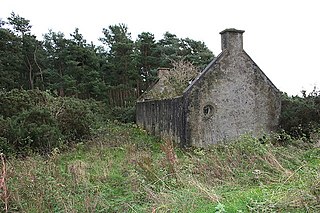 W
WBut and ben is an architectural style for a simple building, usually applied to a residence. The etymology is from the Scots term for a two-roomed cottage. The term describes a basic design of "outer room" conjoined with "inner room" as a residential building plan; the outer room, used as an antechamber or kitchen, is the but, while the inner room is the ben. The word but, here, comes from Early Scots/Middle English "bouten" "outside", and ben from ES/ME "binnen", "inside".
 W
WChunche is a Uyghur word that refers to a kind of building used to make raisins in Turpan, Xinjiang Uyghur Autonomous Region, China. The building has a dark interior, and the walls are covered with a large number of holes to allow wind to pass through and assist in the drying process through evaporation. Chunches are usually built in high, windy, areas due to the need for the wind.
 W
WA corn exchange is a building where merchants trade grains. The word "corn" in British English denotes all cereal grains, such as wheat and barley; in the United States these buildings were called grain exchange. Such trade was common in towns and cities across England until the 19th century, but as the trade became centralised in the 20th century many such buildings were used for other purposes. Several have since become historical landmarks.
 W
WA cottage is typically a small house. It may carry the connotation of being an old or old-fashioned building. In modern usage, a cottage is usually a modest, often cosy dwelling, typically in a rural or semi-rural location. The cottage orné, often quite large and grand residences built by the nobility, dates back to a movement of "rustic" stylised cottages of the late 18th and early 19th century during the Romantic movement.
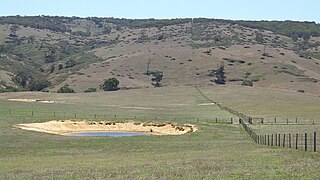 W
WA dam is a water reservoir in the ground, confined by a barrier, embankment or excavation, on a pastoral property or similar. The term is found widely in South African, Australian and New Zealand English, and several other English dialects, such as that of Yorkshire.
 W
WA farmhouse is a building that serves as the primary quarters in a rural or agricultural setting. Historically, farmhouses were often combined with space for animals called a housebarn. Other farmhouses may be connected to one or more barns, built to form a courtyard, or with each farm building separate from each other.
 W
WA forester's lodge, forester's house or forester's hut is the residence of a forester, usually one who is in charge of a forest district.
 W
WGardiners Island Windmill is a historic windmill on Gardiners Island in East Hampton, New York.
 W
WA girna is a type of traditional corbelled hut found in rural areas in parts of Malta. They bear similarities with a number of dry stone vernacular building types found in other Mediterranean countries, and they are primarily used for storage or as temporary shelters. It is possible that in the past they were also used for human habitation.
 W
WA goat tower is a multi-story decorative goat house, modeled on a European garden folly, an early example of which was built in Portugal in the 19th century. The first goat tower was built at Aveleda, a winery in Portugal's Vinho Verde region. Since 1981, several other goat towers have been built in South Africa, Norway, the United States, the United Kingdom, and Argentina; these include three at other wineries. The towers typically are multi-story with climbing ramps spiralling the exterior and often become tourist attractions.
 W
WA greenhouse is a structure with walls and roof made chiefly of transparent material, such as glass, in which plants requiring regulated climatic conditions are grown. These structures range in size from small sheds to industrial-sized buildings. A miniature greenhouse is known as a cold frame. The interior of a greenhouse exposed to sunlight becomes significantly warmer than the external temperature, protecting its contents in cold weather.
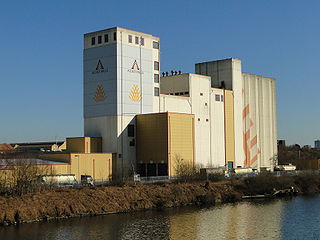 W
WA gristmill grinds cereal grain into flour and middlings. The term can refer to either the grinding mechanism or the building that holds it. Grist is grain that has been separated from its chaff in preparation for grinding.
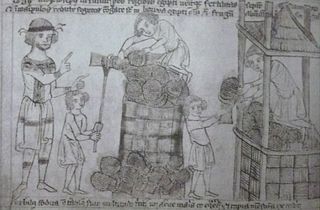 W
WA hay barrack (haybarrack) is an open structure with a movable roof for storing loose hay on a farm. Hay barracks were widespread in northern Europe in medieval times, also found in the Alps and North America, but are rare today. Early usage of this term was noted as being peculiar to New York state. Hay barracks were used in much of Europe and parts of colonial America, but were very common in the Netherlands, where they are called hooiberg or kapberg.
 W
WA hayloft is a space above a barn, stable or cow-shed, traditionally used for storage of hay or other fodder for the animals below. Haylofts were used mainly before the widespread use of very large hay bales, which allow simpler handling of bulk hay.
 W
WA horse mill is a mill, sometimes used in conjunction with a watermill or windmill, that uses a horse engine as the power source. Any milling process can be powered in this way, but the most frequent use of animal power in horse mills was for grinding grain and pumping water. Other animal engines for powering mills are powered by dogs, donkeys, oxen or camels. Treadwheels are engines powered by humans.
 W
WThe mill cottage on the Lion Gardiner farm at 36 James Lane on the landmarked East Hampton Village green has become a museum displaying 19th and early-20th-century landscape paintings. It is a contributing structure on the NRHP East Hampton Village District, replacing the original cottage on the lot situated with the windmill and Rev James historic marker.
 W
WA livery yard, livery stable or boarding stable, is a stable where horse owners pay a weekly or monthly fee to keep their horses. A livery or boarding yard is not usually a riding school and the horses are not normally for hire. Facilities at a livery yard normally include a loose box or stable and access for the horse to graze on grass.
 W
WThe Lone Shieling is a Scottish-style sheep crofters hut located in Cape Breton Highlands National Park, Nova Scotia. Built in 1942, it is one of the earliest structures in the park and is a Recognized Federal Heritage Building due to its historical and architectural significance. A short trail, named for the building, leads to Lone Shieling. The building is constructed from irregular field stone with a timber and thatch roof.
 W
WA malt house, malt barn, or maltings, is a building where cereal grain is converted into malt by soaking it in water, allowing it to sprout and then drying it to stop further growth. The malt is used in brewing beer, whisky and in certain foods. The traditional malt house was largely phased out during the twentieth century in favour of more mechanised production. Many malt houses have been converted to other uses, such as Snape Maltings, England, which is now a concert hall.
 W
WA malt house, malt barn, or maltings, is a building where cereal grain is converted into malt by soaking it in water, allowing it to sprout and then drying it to stop further growth. The malt is used in brewing beer, whisky and in certain foods. The traditional malt house was largely phased out during the twentieth century in favour of more mechanised production. Many malt houses have been converted to other uses, such as Snape Maltings, England, which is now a concert hall.
 W
WAn oast, oast house or hop kiln is a building designed for kilning (drying) hops as part of the brewing process. They can be found in most hop-growing areas and are often good examples of vernacular architecture. Many redundant oasts have been converted into houses. The names oast and oast house are used interchangeably in Kent and Sussex. In Surrey, Hampshire, Herefordshire and Worcestershire they are called hop kilns.
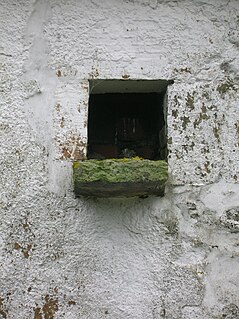 W
WAn owl hole is a structural entrance built into buildings to allow predatory birds, typically barn owls, to enter. The birds prey on farm vermin, and therefore benefit the human owner of the structure in a symbiotic relationship.
 W
WA pen is an enclosure for holding livestock. It may also perhaps be used as term for enclosure for other animals such as pets that are unwanted inside the house. The term describes types of enclosures that may confine one or many animals. Construction and terminology vary depending on the region of the world, purpose, animal species to be confined, local materials used and tradition. Pen or penning as a verb refers to the act of confining animals in an enclosure.
 W
WA pineapple pit is a method of growing pineapples in colder climates. This method of cultivation was invented by gardeners in the UK, during the Victorian era.
 W
WA polytunnel is a tunnel typically made from steel and covered in polyethylene, usually semi-circular, square or elongated in shape. The interior heats up because incoming solar radiation from the sun warms plants, soil, and other things inside the building faster than heat can escape the structure. Air warmed by the heat from hot interior surfaces is retained in the building by the roof and wall. Temperature, humidity and ventilation can be controlled by equipment fixed in the polytunnel or by manual opening and closing of vents. Polytunnels are mainly used in temperate regions in similar ways to glass greenhouses and row covers. Besides the passive solar heating that every polytunnel provides, every variation of auxiliary heating is represented in current practice. The nesting of row covers and low tunnels inside high tunnels is also common.
 W
WA round barn is a historic barn design that could be octagonal, polygonal, or circular in plan. Though round barns were not as popular as some other barn designs, their unique shape makes them noticeable. The years from 1880–1920 represent the height of round barn construction. Round barn construction in the United States can be divided into two overlapping eras. The first, the octagonal era, spanned from 1850–1900. The second, the true circular era, spanned from 1889–1936. The overlap meant that round barns of both types, polygonal and circular, were built during the latter part of the nineteenth century. Numerous round barns in the United States are listed on the National Register of Historic Places.
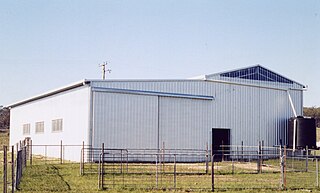 W
WShearing sheds are large sheds located on sheep stations to accommodate large scale sheep shearing activities.
 W
WA shed is typically a simple, single-story roofed structure in a back garden or on an allotment that is used for storage, hobbies, or as a workshop. Sheds vary considerably in their size and complexity of construction, from simple open-sided ones designed to cover bicycles or garden items to large wood-framed structures with shingled roofs, windows, and electrical outlets. Sheds used on farms or in industry can be large structures. The main types of shed construction are metal sheathing over a metal frame, plastic sheathing and frame, all-wood construction, and vinyl-sided sheds built over a wooden frame. Small sheds may include a wooden or plastic floor, while more permanent ones may be built on a concrete pad or foundation. Sheds may be lockable to deter theft or entry by children, domestic animals, wildlife, etc.
 W
WShelter Island Windmill is an historic windmill north of Manwaring Road in Shelter Island, Suffolk County, New York. It was built in 1810. The windmill has been on Shelter Island since 1840, in its current location in 1926, and has been on the Sylvester Manor farm ever since.
 W
WA shieling, also spelt sheiling, shealing and sheeling, is a hut, or collection of huts, once common in wild or lonely places in the hills and mountains of Scotland and northern England. The word is also used for a mountain pasture for the grazing of cattle in summer, implying transhumance between there and a valley settlement in winter.
 W
WA silo is a structure for storing bulk materials. Silos are used in agriculture to store grain or fermented feed known as silage. Silos are commonly used for bulk storage of grain, coal, cement, carbon black, woodchips, food products and sawdust. Three types of silos are in widespread use today: tower silos, bunker silos, and bag silos.
 W
WA slaughterhouse, also called abattoir, is a facility where animals are slaughtered, most often to provide food for humans. Slaughterhouses supply meat, which then becomes the responsibility of a packaging facility.
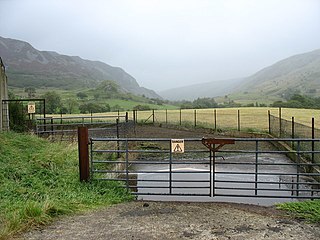 W
WA slurry pit, also known as a farm slurry pit, slurry tank, slurry lagoon or slurry store, is a hole, dam, or circular concrete structure where farmers gather all their animal waste together with other unusable organic matter, such as hay and water run off from washing down dairies, stables, and barns, in order to convert it over a lengthy period of time into fertilizer that can eventually be reused on their lands to fertilize crops. The decomposition of this waste material produces deadly gases, making slurry pits potentially lethal without precautions such as the use of a breathing apparatus with air supply.
 W
WA smokehouse or smokery (British) is a building where meat or fish is cured with smoke. The finished product might be stored in the building, sometimes for a year or more. Even when smoke is not used, such a building—typically a subsidiary building—is sometimes referred to as a "smokehouse". When smoke is not used, the term "meat house" is common.
 W
WA stable is a building in which livestock, especially horses, are kept. It most commonly means a building that is divided into separate stalls for individual animals and livestock. There are many different types of stables in use today; the American-style barn, for instance, is a large barn with a door at each end and individual stalls inside or free-standing stables with top and bottom-opening doors. The term "stable" is also used to describe a group of animals kept by one owner, regardless of housing or location.
 W
WStaddle stones were originally used as supporting bases for granaries, hayricks, game larders, etc. The staddle stones lifted the granaries above the ground thereby protecting the stored grain from vermin and water seepage. In Middle English staddle or stadle is stathel, from Old English stathol, a foundation, support or trunk of a tree. They can be mainly found in Great Britain, Norway ("stabbur"), Galicia and Asturias.
 W
WA storm shelter or storm cellar is a type of underground bunker designed to protect the occupants from violent severe weather, particularly tornadoes. They are most frequently seen in the Midwest and Southeastern United States where tornadoes are generally frequent and the low water table permits underground structures.
 W
WA sty or pigsty is a small-scale outdoor enclosure for raising domestic pigs as livestock. It is sometimes referred to as a hog pen, hog parlor, pigpen, pig parlor, or pig-cote, although pig pen may refer to pens confining pigs that are kept as pets as well. Pigsties are generally fenced areas of bare dirt and/or mud. "Sty" and "pigsty" are used as derogatory descriptions of dirty, messy areas, the word sty deriving from the Proto-German stijan meaning filthy hovel. There are three contributing reasons that pigs, generally clean animals, create such a living environment:Pigs are voracious eaters and will eat all the plants in the enclosure until there is nothing left to control erosion. The pig will naturally root and dig for food in the enclosure, further disturbing the soil. Pigs do not regulate temperature by sweating which means that they must be provided with water or mud in which they can control their own body temperature.
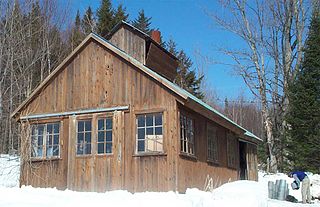 W
WA sugar shack, also known as sap house, sugar house, sugar shanty or sugar cabin is a semi-commercial establishment, primarily found in Eastern Canada and northern New England. Like the name implies, sugar shacks are small cabins or groups of cabins where sap collected from sugar maple trees is boiled into maple syrup. It is often found on the same territory as the sugar bush, which is intended for cultivation and production of maple syrup by way of craftsmanship.
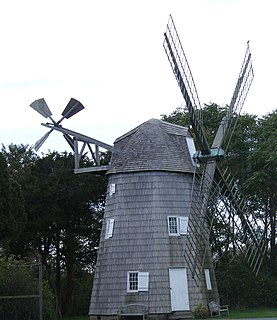 W
WWainscott Windmill is an historic windmill on Georgica Association grounds in Wainscott, New York in the Town of East Hampton. Georgica Association grounds are both within Wainscott and the Village of East Hampton to the east.
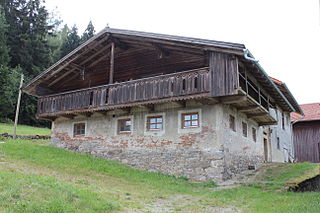 W
WThe Waldlerhaus is a local form of agricultural building, typical of the Bavarian Forest and Upper Palatine Forest in Germany. The term Waldlerhaus goes back to the 19th century and describes the house of a person who lives in and from the forest.
 W
WA watermill or water mill is a mill that uses hydropower. It is a structure that uses a water wheel or water turbine to drive a mechanical process such as milling (grinding), rolling, or hammering. Such processes are needed in the production of many material goods, including flour, lumber, paper, textiles, and many metal products. These watermills may comprise gristmills, sawmills, paper mills, textile mills, hammermills, trip hammering mills, rolling mills, wire drawing mills.
 W
WA windmill is a structure that converts wind power into rotational energy by means of vanes called sails or blades, specifically to mill grain (gristmills), but the term is also extended to windpumps, wind turbines and other applications. The term wind engine is sometimes used to describe such devices.
 W
WCorwith Windmill at Water Mill is a historic mill on NY 27 and Halsey Lane in Southampton, New York.
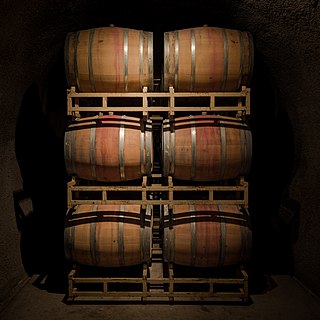 W
WWine caves are subterranean structures for the storage and the aging of wine. They are an integral component of the wine industry worldwide. The design and construction of wine caves represents a unique application of underground construction techniques.